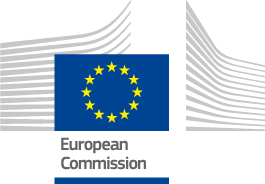HELP112 project
Related topics
Spacedate: 26/07/2017
The project investigated alternatives to the Cell-ID technology used to locate emergency callers today. Specifically, it sought alternative ways to:
- establish caller position
- transmit it to the emergency response centre, also known as the Public Safety Answering Point (PSAP)
The 12-month project was conducted by a consortium of 8 partners: Telespazio, the European Emergency Number Association (EENA), PTOLEMUS Consulting Group, Creativity Software and 4 emergency response centres, namely BT (UK), 112 Lithuania, AREU (Italy) and NNÖ (Austria).
It analysed the potential benefits and costs of combinations of 7 alternative positioning technologies (using cellular networks, WiFi and satellite positioning e.g. GPS and Galileo - Europe's satellite navigation system), together with 5 different data transmission technologies (SMS, HTTPS, eCall, IMS, network transmission). In doing so, it identified global navigation satellite system (GNSS) technology as the most effective way to improve caller accuracy, with transmission to the PSAP via SMS or HTTPS as the most effective method.
The project also carried out field tests in the 4 emergency response centres. This led to the actual deployment of a handset-based caller location solution in Lithuania and parts of Austria.
Conclusions
The project found handsets using global navigation satellite systems (GNSS) as the most accurate way to determine emergency caller location. The most suitable solution was identified as Advanced Mobile Location (AML), which is a handset functionality activated whenever a call to 112 is placed. It operates without user intervention. The study highlights the potential of using GNSS and solutions like AML in determining emergency caller location. Specifically:
- the most significant future improvements will come from the use of GNSS chipsets in handsets, especially in rural environments, where the area given by the location can be reduced on average by 460 000 times in more than 70% of the cases
- thanks to location accuracy improvements brought by these handsets, an average of 30 seconds can be saved on every mobile emergency call made in the EU, and more than 1.5 minutes on average for calls placed in rural environments
- at EU level, close to 800 lives could be saved every year thanks to this improvement in emergency caller location
- the net benefits of including handset-based location over the next 10 years range from €55 to €100 billion
- ensuring compatibility with the EU’s satellite navigation programme Galileo could bring additional net benefits estimated between €240 million and €1 billion over the next 10 years
Background
Emergency calls today are located using mobile networks’ old Cell-ID technology. This technology finds people with an average accuracy of 2 km, or even 10 km in certain cases.
When the caller’s position is inaccurate, it leads to delays by increasing both the time spent on the phone and the time it takes for emergency services to arrive. It can sometimes even be impossible to find the victim.
As a result, every year, emergency mobile calls take longer than fixed calls to handle and nearly 300 000 people suffer from a delay of at least 30 minutes.
Documents
Work package 1
Work package 2
Work package 3
- Descriptions of the scenarios
- Technical description document
- Recommendation for the pilot
- Analysis of the gaps with existing standards
Work package 4
Work package 5

